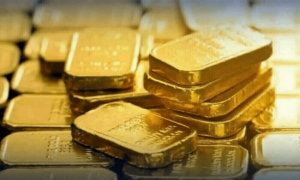Gold showed its strength earlier this week, as after stuttering a bit it successfully managed to cross the $1,200/ounce level, on the back of massive rise in the greenback against major currencies.
A fresh wave of financial panic in Spain has fuelled the turmoil that was initially spurred by the Greek crisis. This was enough to trigger demand for the yellow metal despite a massive Euro Zone bailout package.
In yesteryears world, a massive increase in the US dollar against leading
currencies would have dented the yellow metals price a great deal.
But these are different times, and it seems that investors are smart enough to realize that US dollars resurgence is more a case of falling euro than its strengthening. That is why the ever so strong inverse relationship between gold and dollar is not working this time around.
With a slowdown in the global real estate sector, uncertainty in equity markets and depleting faith in sovereign debt, which was once considered a relatively safer option - risk-averse investors are left with no choice but to seek glory in gold.
"A lot of that is hot money flying to safety in gold funds because it doesn know where to go in an uncertain world," said Eagle Mining Research analyst Keith Goode.
World gold council expects demand to be strong during the current year - driven by higher jewellery demand in the worlds two largest gold loving nations India and China, and higher investment demand from US and Europe.
Strong economic growth projections in Asian countries and normal monsoon rains in India are the major reasons cited for strong jewellery demand. A good monsoon season leads to higher agricultural incomes in India, which translate into solid demand for gold.
Numbers speak for themselves: gold holdings in the SPDR Gold Trust, the biggest exchange-traded fund backed by bullion, increased by around 121 metric tons in the past month to a record 1,267 metric tons on Tuesday.
Despite strong reasons in favour of gold prices, there are a few pundits who believe the metal will lose its shine later this year. These include Julian Jessops, Chief International Economist at Capital Economics - a UK-based independent macro economic research consultancy - who said recently that unless the government of a major economy actually defaults, or the dollar collapses, we continue to expect gold prices to drop back to 1,000 dollars by the end of current year.
=======================================================================================
TRENDS IN GLOBAL GOLD DEMAND
=======================================================================================
YoY QoQ
Change change
(tons) Q1CY09 Q2CY09 Q3CY09 Q4CY09 Q1CY10 1QCY10 1QCY10
=======================================================================================
Total Identifiable Demand 1,018 770 815 853 760 -25% -11%
Jewellery consumption 329 431 488 511 471 43% -8%
Industrial and dental 79 94 97 103 103 31% 0%
Identifiable investment 610 246 230 238 186 -69% -22%
ETFs and similar products 465 57 41 54 4 -99% -93%
=======================================================================================






















Comments
Comments are closed.